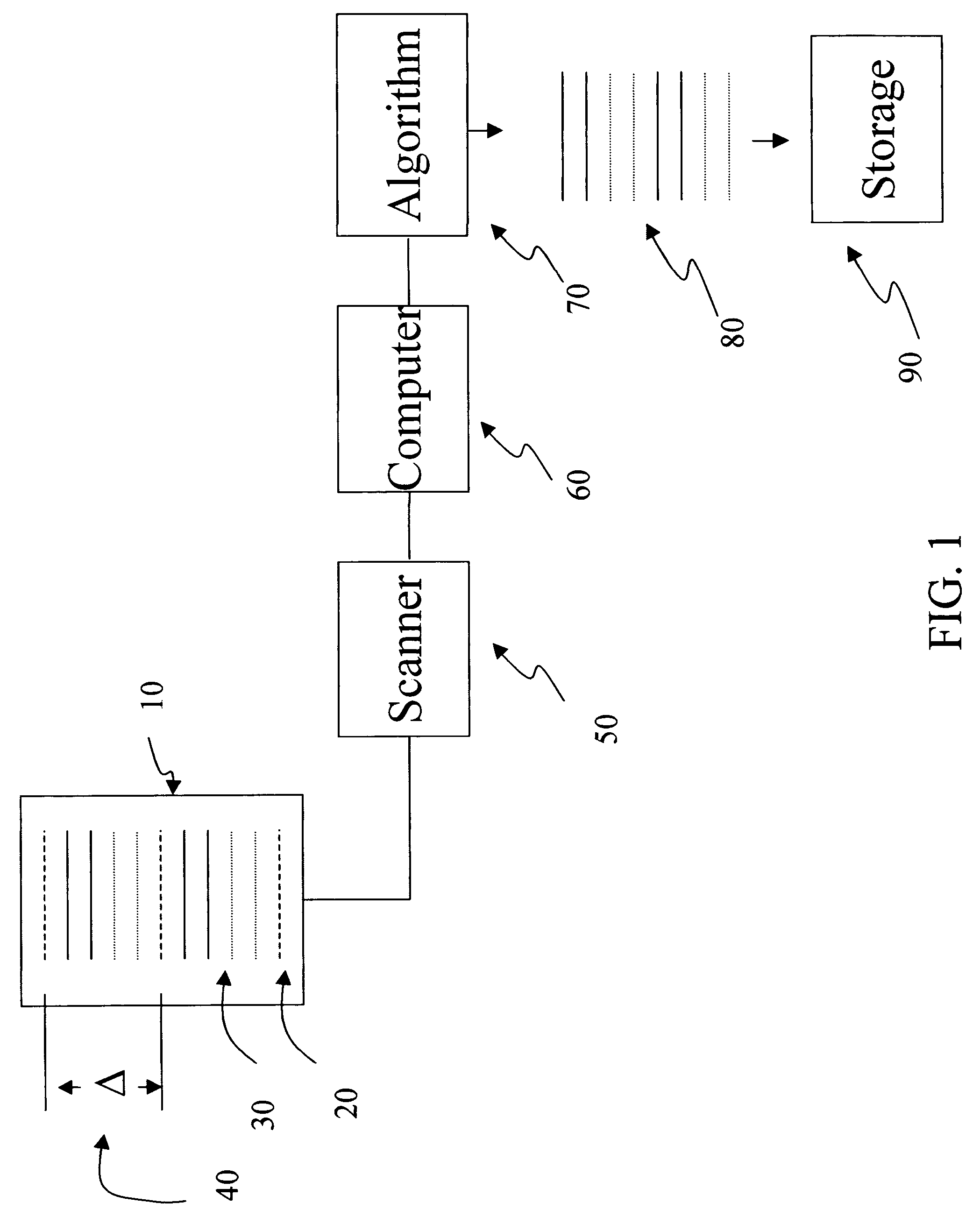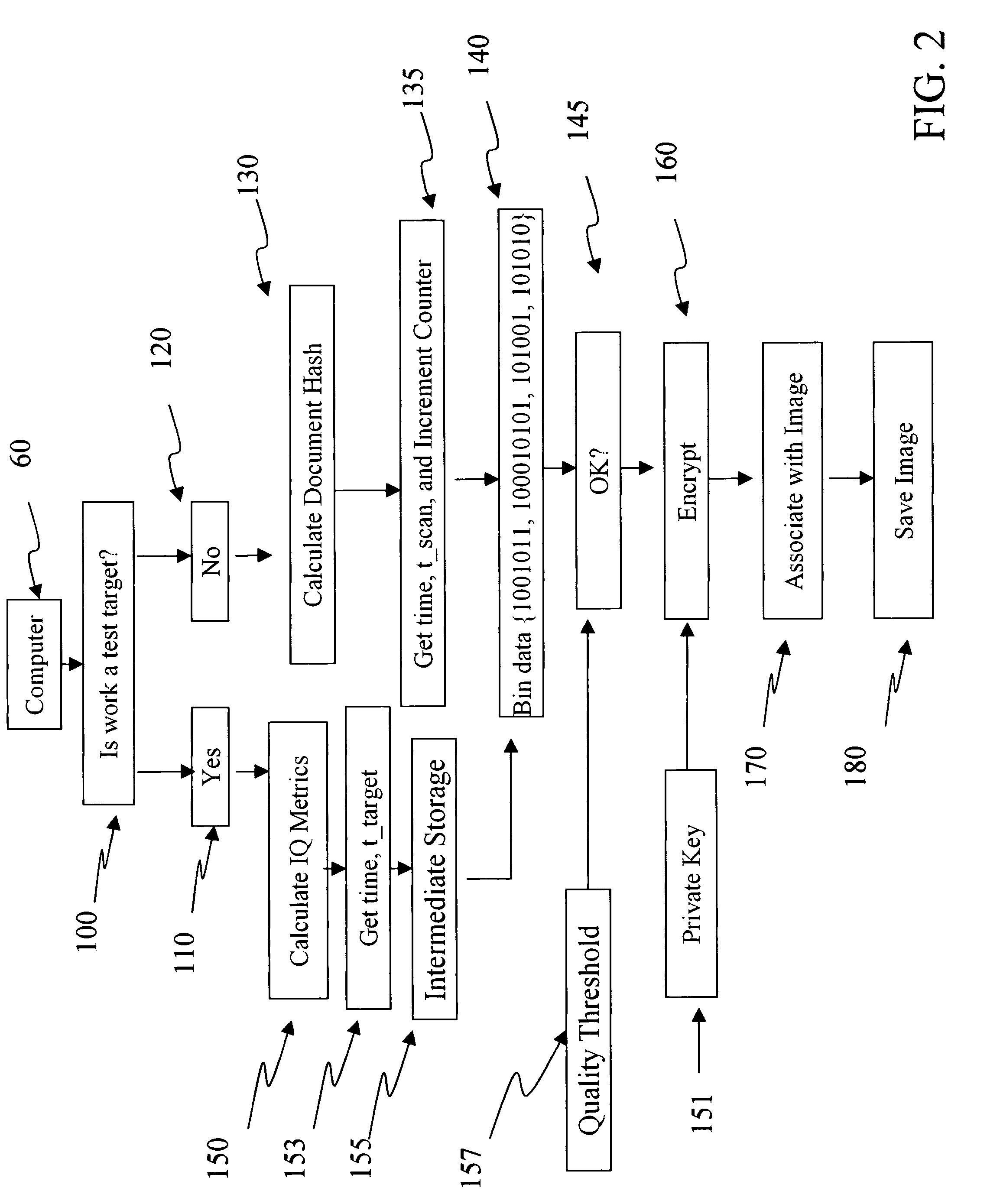Assured document and method of making
a document and document technology, applied in the field of document and document assurance, can solve the problems of digitized documents, meaningless authenticity technology such as described above, and inability to answer the question of scanned quality
- Summary
- Abstract
- Description
- Claims
- Application Information
AI Technical Summary
Benefits of technology
Problems solved by technology
Method used
Image
Examples
Embodiment Construction
[0014]Refer to FIG. 1 which depicts a broad view of the processing flow of the invention. Box 10 represents the input document queue of a document scanner 50. In the document queue are test target images 20 represented by dashed lines and documents it is wished to scan and archive 30 which are represented by solid lines.
[0015]By the word “document”, it is meant bank checks, X-ray film, photographic film, historical letters, scholarly papers, photographs, income tax forms, magazine pages or any paper, plastic or otherwise scannable material. The phrase “document queue” is intended to refer to a plurality of documents it is wished to scan and archive. These documents may reside in a physical feeding mechanism on the scanner or may be manually fed to the scanner over a short or long period of time.
[0016]The symbol delta, Δ, 40 represents an interval in which test targets are interspersed with documents to measure scan quality. It is known to those skilled in the art of scanning that im...
PUM
 Login to View More
Login to View More Abstract
Description
Claims
Application Information
 Login to View More
Login to View More - R&D
- Intellectual Property
- Life Sciences
- Materials
- Tech Scout
- Unparalleled Data Quality
- Higher Quality Content
- 60% Fewer Hallucinations
Browse by: Latest US Patents, China's latest patents, Technical Efficacy Thesaurus, Application Domain, Technology Topic, Popular Technical Reports.
© 2025 PatSnap. All rights reserved.Legal|Privacy policy|Modern Slavery Act Transparency Statement|Sitemap|About US| Contact US: help@patsnap.com



